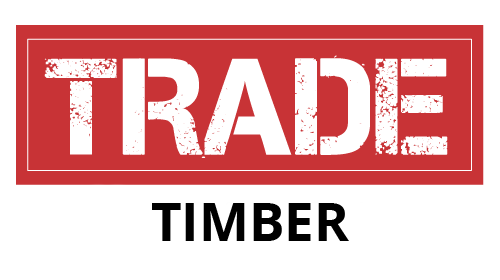In this ultimate guide to sawn timber, we will explain what it is and why it is an essential component in most construction projects. Additionally, we will break down how sawn timber grading works.
What Is Sawn Timber?
Sawn timber refers to wood sawn from logs into rectangular beams for construction or manufacturing purposes. It is one of the most ancient wood products after felling and a basic building material for most industries.
Sawn timber generally comes in two finishes:
- Rough Sawn – Wood sawn to size but retaining a coarse surface, usually straight from the sawmill. Such wood is only suitable for concealed structural purposes, i.e. framing and substructures, where a neat finish is not required.
- Regularised or Planed Sawn Timber – Timber that is smoothed and reduced to an even size, generally known as planed all round (PAR) or planed square edge (PSE). It is used where a cleaner look is required, e.g., exposed framing, joinery, or furniture making.
The Timber Production Process
Before it arrives at your workshop or site, timber will have passed through several processes of manufacture:
- Felling and Logging – Trees are felled, trimmed, and transported to sawmills.
- Sawmilling – Logs are cut into battens, planks, and boards.
- Drying – Timber is either dried outdoors or kiln-dried to reduce its moisture content and prevent warping.
- Treatment (Optional) – Timber is treated under pressure to provide added resistance to rotting, insects, and dampness.
- Grading and Finishing – The timber is graded by strength and quality (C16, C24, etc.) and can be planed or left as is, depending on its intended use.
Types of Sawn Timber
Sawn timber can be either hardwood or softwood, with distinct characteristics suited to various applications.
Softwood Sawn Timber: Softwood is derived from timber such as pine, spruce, and fir. It is cheaper, easier to use, and is used extensively throughout the UK construction industry.
Treated Softwood: Pressure-treated chemicals, ideally for external use in decking work, fencing, and landscaping.
Untreated Softwood: Cheap option for internal applications such as stud partitions, joists, and other framing uses.
Hardwood Sawn Timber: Hardwoods, i.e. oak, beech, or ash, are derived from deciduous trees. They are denser, stronger, and utilised for high-quality joinery, flooring, and structural construction where strength and appearance are paramount.
Common Uses of Sawn Timber
Sawn timber is very versatile and can be utilised on a vast number of building projects. Below are some of the most popular uses:
- Construction
- Internal stud partitions and walls
- Joists and floor frames
- Rafters and roofing battens
- Commercial and house construction structural framing
- Outdoor and landscaping Projects
- Fencing posts and panels
- Raised beds and garden borders
- Pergolas and gazebos
- Subframes and decking, and retaining walls
- DIY and Joinery
- Shelves and storage
- Workbenches and tables
- Workshop frame
- Wall cladding and panelling
Understanding Timber Size
The timber is usually sold by nominal sizes, i.e. prior to any drying or planning. This leads to confusion, especially between finished and rough-sawn timber.
A 47mm x 100mm rough-sawn timber may be sold as it stands, but after planing, it may be reduced to approximately 45mm x 95mm.
Strength Grading – C16 vs C24
UK structural timber is strength-graded to withstand certain loads and stresses. The two most commonly available grades are:
C16 Timber
- Lower cost
- Can have more knots and smaller defects
- Ideal for most general structural building, especially where the loads are not heavy or extreme
C24 Timber
- More strength, fewer defects
- Most suited to structural building where maximum performance is required
- Better for exposed or loaded situations
Treated Timber
Pressure-treated with preservative to resist damp, fungi, and insect attack. It’s the option to use exterior or where timber will likely be exposed to damp conditions (e.g. fencing, decking subframes, or external structures).
Untreated Timber
Not chemically treated, therefore lighter and more workable. Also ideal for internal framing, dry environments, or for situations where finishing after installation will be necessary such as painting or staining.
Sustainable Timber Sourcing
Sustainability is a big concern in the timber industry. By utilising sustainably sourced timber, you’re not just helping the environment, but you’ll also be getting top-quality wood, at very high standards.
Tips on Storing and Handling Sawn Timber
If you want the best from your timber, proper handling and storage are essential:
Dry out timber: Place the wood off the ground on bearers or pallets and cover it with a ventilated sheet.
Stack evenly: Maintain flat, level stacking to prevent warping or bowing in the long term.
Cut and treat ends: When cutting treated timber, use a suitable end grain preservative to maintain protection against rot.
Why Choose Trade Timber
At Trade Timber, we take pride in providing high-quality sawn timber at affordable prices, backed by excellent service and prompt delivery. That’s why our UK customers trust us:
From treated softwood and rough sawn right up to top-quality structural timber, we’ve got it all to offer. We offer delivery nationwide with fast lead times, ensuring your work is not left waiting. Our staff are down-to-earth and will ensure your order runs as smoothly as possible.
Regardless of whether you need new roofs, an extension’s framing or a swift weekend task on the garden, we have the ideal timber to allow you to finish the job.
Sawn timber is the backbone of thousands of construction and DIY plans. An understanding of its type, grade, and intended use will enable you to make an informed buying decision and achieve a successful build. From strength-graded structural timber for construction work to pressure-treated timber ideally suited to garden purposes, Trade Timber is your expert supplier of service and quality you can rely on.
Construct Better with Trade Timber – Quality Timber, Delivered Quickly. Order online now with us!



